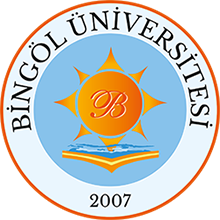Soğuk İş Takım Çeliklerinin Frezelenmesinde Çözünebilir Sio2 Katkılı Nanoakışkanların İşlenebilirlik Özelliklerine Etkisinin İncelenmesi
Abstract
ÖZET:
Bu çalışmada, CPOH soğuk iş takım çeliğinin işlenmesinde yenilikçi ve sürdürülebilir soğutma-yağlama metotlarının işleme parametreleri üzerindeki etkileri araştırılmıştır. Deneyler Al-TiN kaplamalı bir freze takımı kullanılarak CNC freze makinasında gerçekleştirilmiştir. Deneyler iki farklı kesme hızında (100 m/dak-130 m/dak), iki farklı ilerleme hızında (0,08 mm/dev-0,1 mm/dev) ve sabit kesme derinliğinde (0,7 mm) gerçekleştirilmiştir. Nanoakışkanlar, sentetik yağa SiO2 nano partiküllerin eklenmesiyle hazırlandı. İşlenebilirliği değerlendirmek için yüzey pürüzlülüğü (Ra), kesme sıcaklığı (Tc), takım aşınması (Vb) ve güç tüketimi değerleri ele alınmıştır. Tüm parametreler değerlendirildiğinde işleme performansına etki eden en iyi soğutma yağlama koşulu, ağırlıkça %0,2 oranında SiO2 içeren nanopartikül katkılı nanoakışkan olduğu tespit edilmiştir. ABSTRACT:
In this study, the effects of innovative and sustainable cooling-lubrication methods on machining parameters during the milling of CPOH cold work tool steel were investigated. Experiments were conducted on a CNC milling machine using an Al-TiN coated milling tool. The experiments were performed at two different cutting speeds (100 m/min and 130 m/min), two different feed rates (0,08 mm/rev and 0,1 mm/rev), and a constant depth of cut (0,7 mm). Nanofluids were prepared by adding SiO2 nanoparticles to synthetic oil. Machinability was evaluated by considering surface roughness (Ra), cutting temperature (Tc), tool wear (Vb), and power consumption values. Among all the parameters evaluated, the best cooling-lubrication condition affecting machining performance was found to be the nanofluid containing 0.2 wt.% of SiO2 nanoparticles.
Collections
- Makine Mühendisliği [24]

DSpace@BİNGÖL by Bingöl University Institutional Repository is licensed under a Creative Commons Attribution-NonCommercial-NoDerivs 4.0 Unported License..













